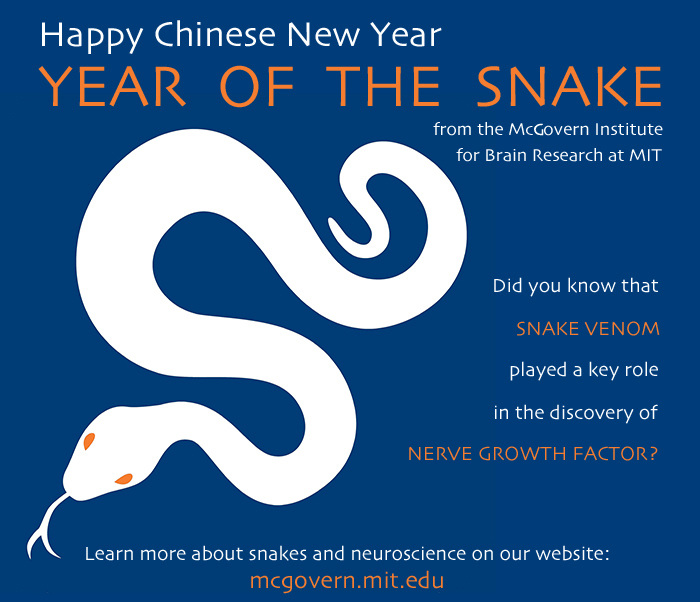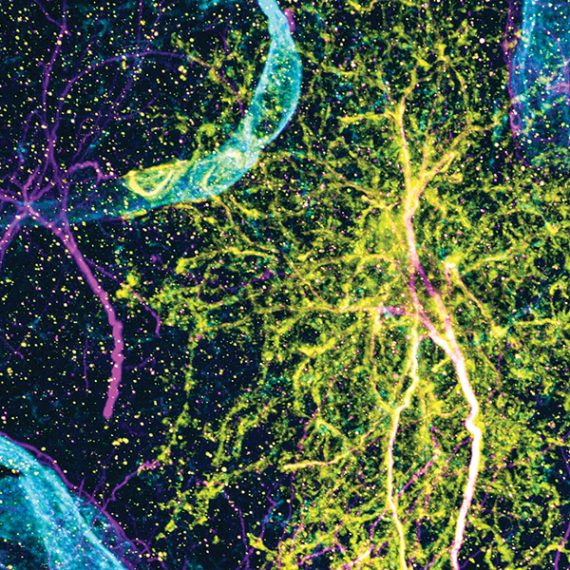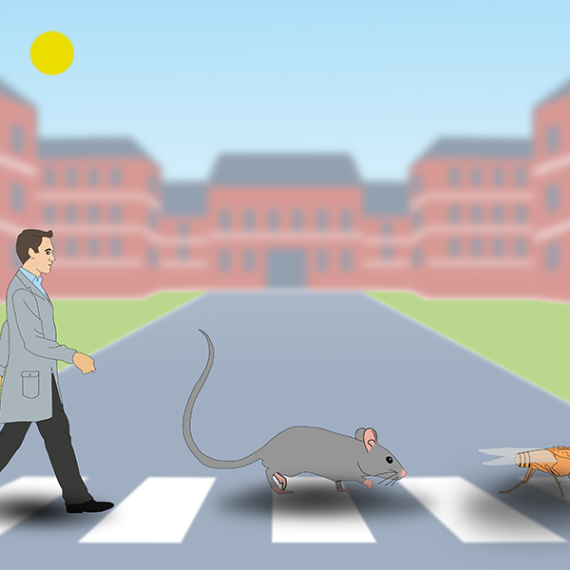What do snakes have to do with neuroscience?

In the Chinese calendar, 2013 is the Year of the Snake, and to celebrate we’ve compiled a list of interesting facts about how snakes have contributed to brain research. [Click for Chinese version of graphic.]
Snake venom
Snake venom has been a rich source of reagents for neuroscience research. Venom from the many-banded krait, a species found in Taiwan and Southern China, led to the identification of the first neurotransmitter receptor. In 1963 Chang and Lee at the National Taiwan University isolated a toxin, known as alpha-bungarotoxin, that binds strongly to the receptor for acetylcholine, the main neurotransmitter at neuromuscular synapses. This toxin, used by snakes to paralyze their victims’ muscles, was used by researchers to purify the acetylcholine receptor, and is still widely used today to study the biology of synapses.
Snake venom played central role in the identification of nerve growth factor (NGF) by Stanley Cohen and Rita Levi-Montalcini, who shared the 1986 Nobel Prize for their work. They discovered that the venom of the moccasin snake (a species of pit viper from the Southeastern US) was a rich source of a factor that could induce outgrowth of fibers from cultured neurons. This enabled them to characterize and eventually purify NGF, the first growth factor to be identified and the prototype for a large family of signaling molecules.
Snake venom has also led to several important advances in pain research, an area of great therapeutic interest. A protein complex isolated from the Texas coral snake has recently been shown to activate acid-sensitive ion channels (ASICs) in pain neurons, which is why bites from these snakes are so painful. A peptide from the venom of a different species (the black mamba of East Africa, among the most venomous of all snakes) blocks the same channels and shows powerful analgesic effects – suggesting a promising new direction for drug development.
There are hundreds of species of venomous snakes, whose venoms contain a rich diversity of substances that have evolved specifically to interfere with the nervous systems of their victims and predators – a diversity that has only begun to be explored.
Snake evolution and behavior
Several families of snakes, including pit vipers, boas and pythons, can hunt at night using infrared (IR) radiation emitted by their warm-blooded prey. This ability arises from pit organs below the eyes, which allow these snakes to locate IR sources, sometimes with great accuracy. The molecular basis of IR detection was recently identified, and found to be an ion channel of the TRP family that is highly sensitive to warmth. The corresponding channel in other species is not strongly temperature-sensitive and is used mainly to detect chemical irritants (in humans it responds to wasabi and mustard). During snake evolution the same channel appears to have been co-opted for IR detection on several independent occasions in different snake families.
Another example of the evolutionary flexibility of brain and behavior comes from the tentacled snake of South-East Asia. This species hunts underwater, lying in wait for fish and detecting their location through a combination of vision and vibration. The snake captures a fish by exploiting its startle reflex – by making a feint with its body, the snake induces the fish to make a stereotypical escape response, directly toward the snake’s jaws. The snake can predict the fish’s behavior and makes a lunge to swallow it, all within about 25ms, or 1/40th second [video]. Remarkably a naïve snake, raised in captivity with no prior experience of fish, can do the same. Thus, the snake’s brain has been pre-wired by evolution to perform this behavior without the need for learning.
Snake phobia
Some people have a phobia for snakes, as do some animals, providing a useful model for understanding the neural basis of fear and anxiety. In one study, researchers even scanned volunteer subjects as they confronted a live snake inside the MRI scanner. These phobic responses are at least partly innate; monkeys, for example, will respond fearfully to a snake-like object even if they have never encountered one before. This raises interesting questions about how our brains are pre-wired to recognize specific stimuli, and also provides an opportunity to study how innate and leaned responses interact to control behavior.
These days snakes have more to fear from humans than vice versa, and many species around the world are now endangered. Awareness of their biology and potential for neuroscience discovery may strengthen efforts to conserve these remarkable creatures.




